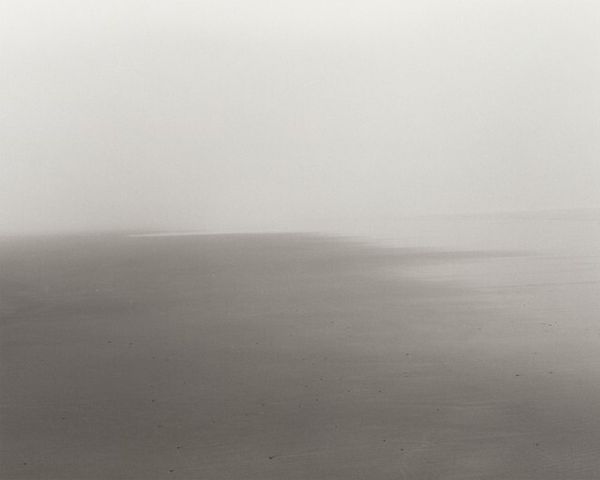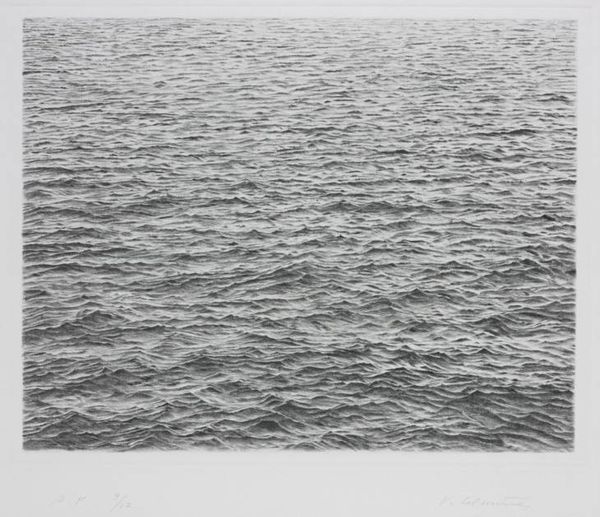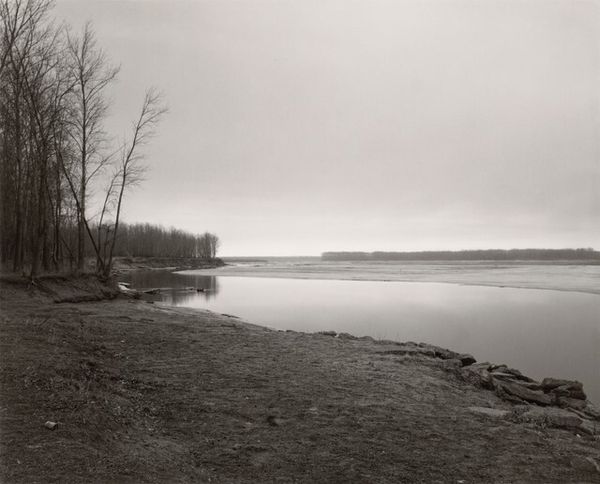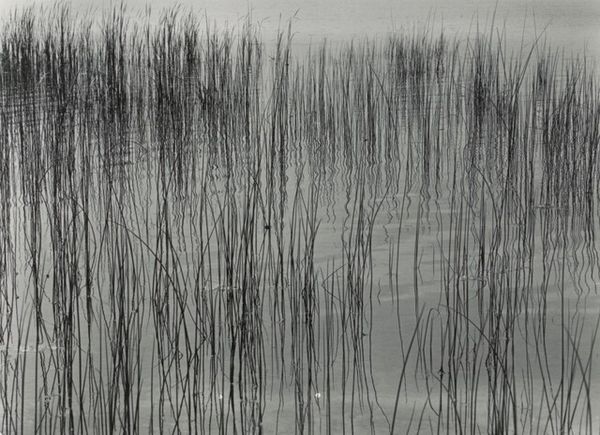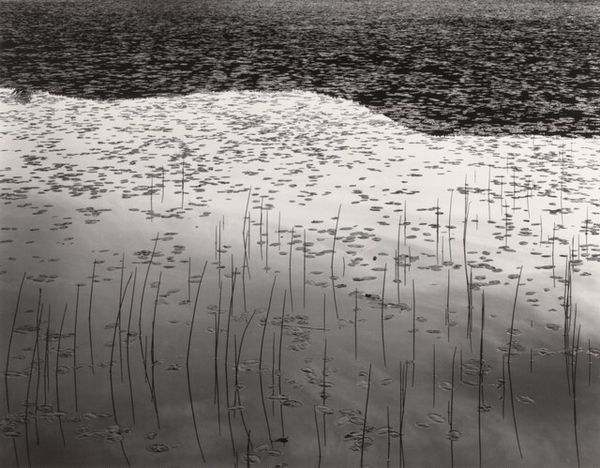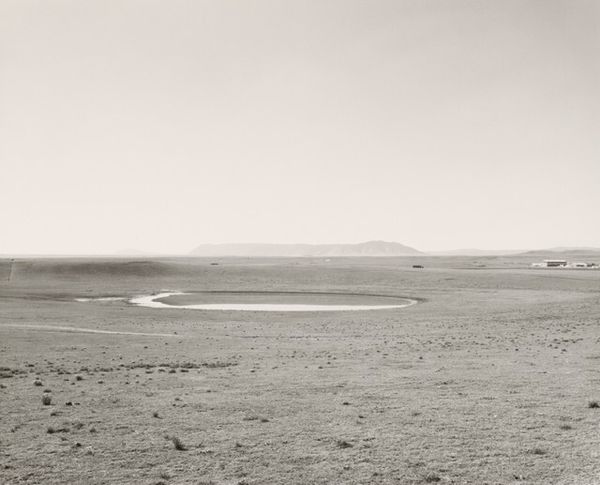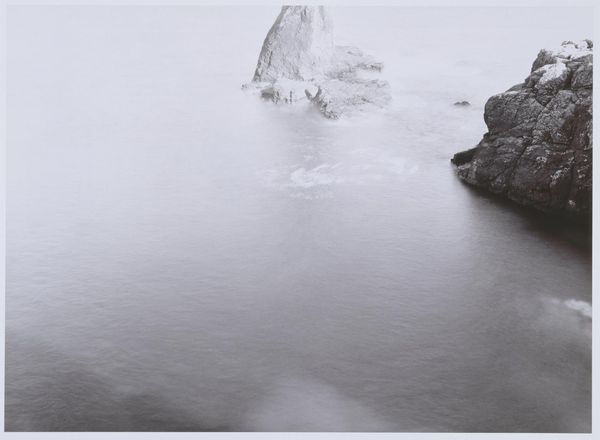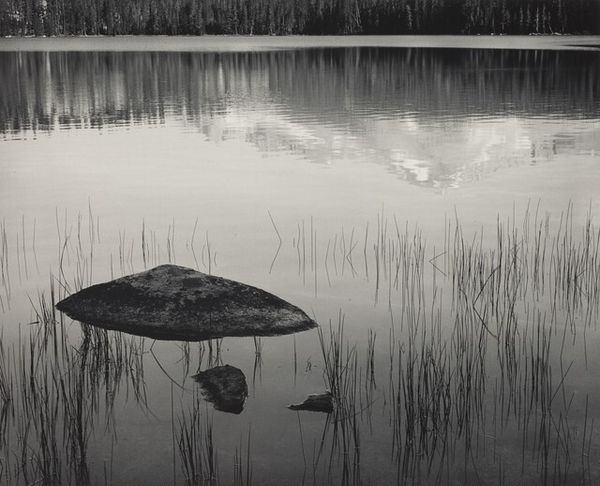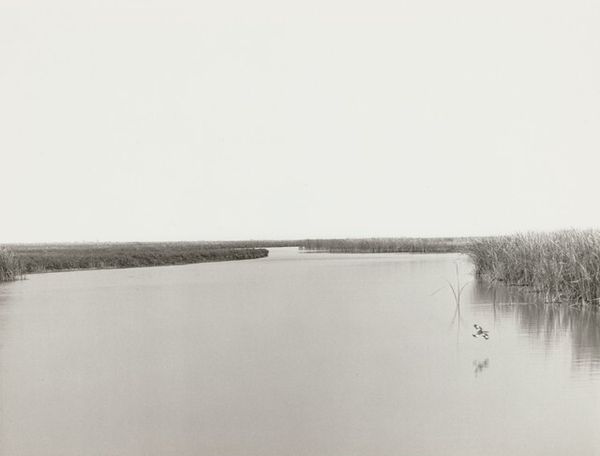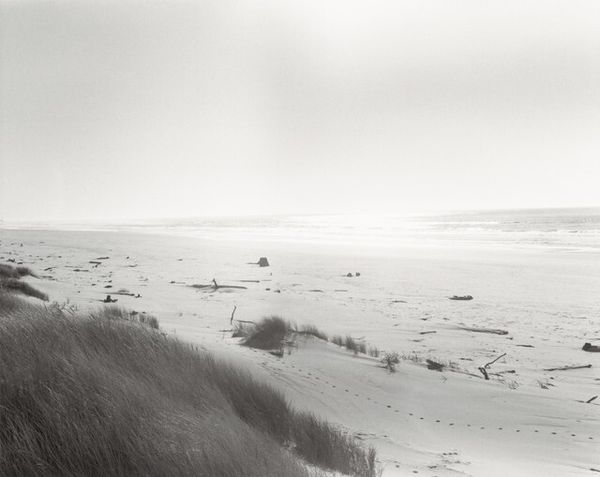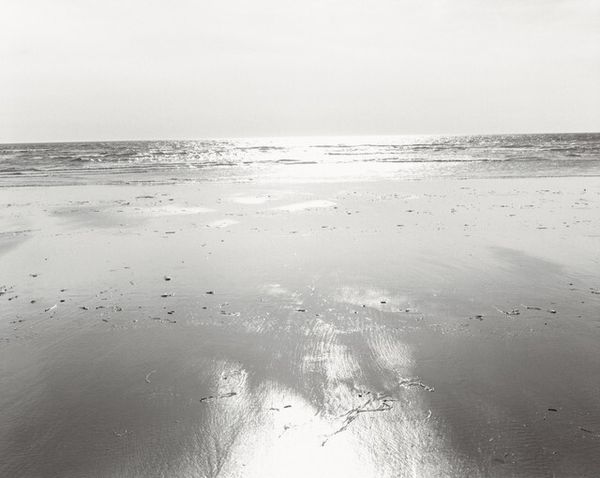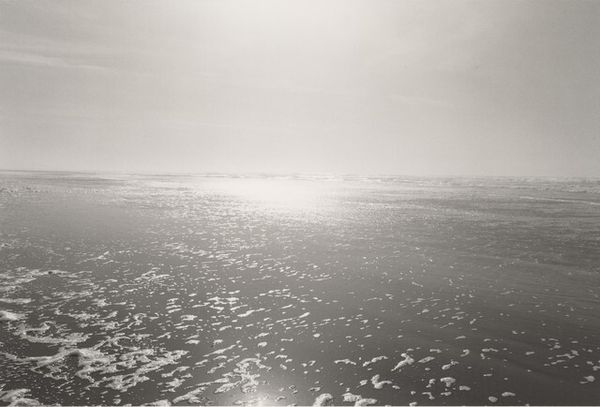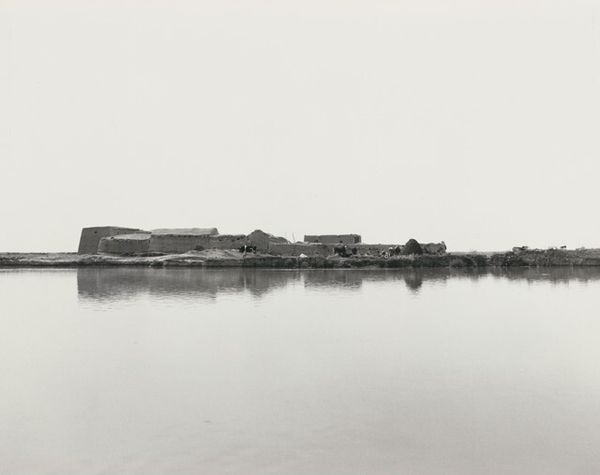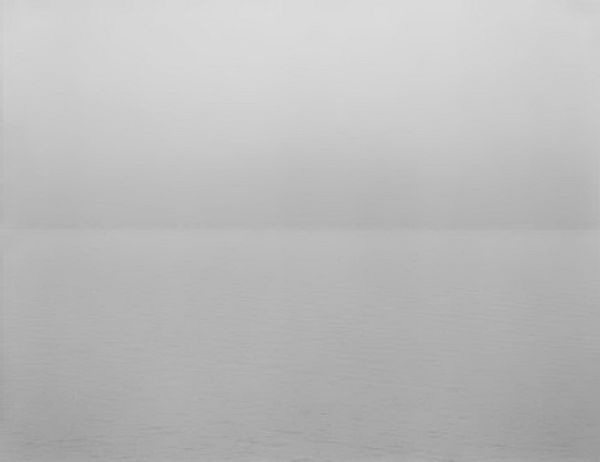
Concrete and ice, Missouri River, Clay County, South Dakota 1977
0:00
0:00
photography, gelatin-silver-print
#
cloudy
#
natural shape and form
#
contemporary
#
black and white photography
#
snowscape
#
landscape
#
warm monochrome
#
photography
#
environmental-art
#
low atmospheric-weather contrast
#
gelatin-silver-print
#
monochrome photography
#
monochrome
#
skyscape
#
monochrome
#
shadow overcast
Dimensions: image: 18 × 22.2 cm (7 1/16 × 8 3/4 in.) sheet: 27.7 × 35.4 cm (10 7/8 × 13 15/16 in.)
Copyright: National Gallery of Art: CC0 1.0
Curator: This gelatin-silver print by Robert Adams, titled "Concrete and Ice, Missouri River, Clay County, South Dakota," dates to 1977. Editor: There's such a stillness. The monochrome palette, almost entirely grey and white, gives it a hushed, almost mournful quality. The frozen river feels immense. Curator: Adams is known for his stark landscapes of the American West, particularly documenting the effects of urbanization and industrialization on the natural environment. This piece, though seemingly simple, fits squarely within that. Editor: And the way the ice meets the concrete, there’s this direct confrontation between the built environment and nature itself. What fascinates me is the seeming lack of any human presence. Is it truly devoid of that? Curator: Well, consider the concrete itself. It's a very modern material, emblematic of human intervention. Its presence speaks to our manipulation, our attempt to control and shape the landscape. But beyond the overt symbolism, consider what this specific river, the Missouri, represents historically. Editor: A crucial waterway for expansion, trade, and sadly, also conflict. Native American displacement and exploitation are deeply woven into the river’s narrative. Does Adams address these layered histories, these cultural burdens through landscape? Curator: I believe he invites that reflection. The stillness you mentioned, perhaps that’s the quiet before, or even after, significant human impact, imprinted both on the land, and, subsequently, its inhabitants. The concrete—what is left, what is built upon those erasures? Editor: So the materiality itself – the concrete, the photographic paper – is a record of processes. Development, construction, image making… all reliant on extraction and consumption. Makes this "simple" image so rich, almost overwhelmingly somber in its layers. Curator: It really does give pause. Looking closely at this frozen moment, we understand more about lasting traces. Editor: It invites contemplation, certainly, not just of a specific landscape, but of the processes that have shaped it, visible and invisible.
Comments
No comments
Be the first to comment and join the conversation on the ultimate creative platform.
